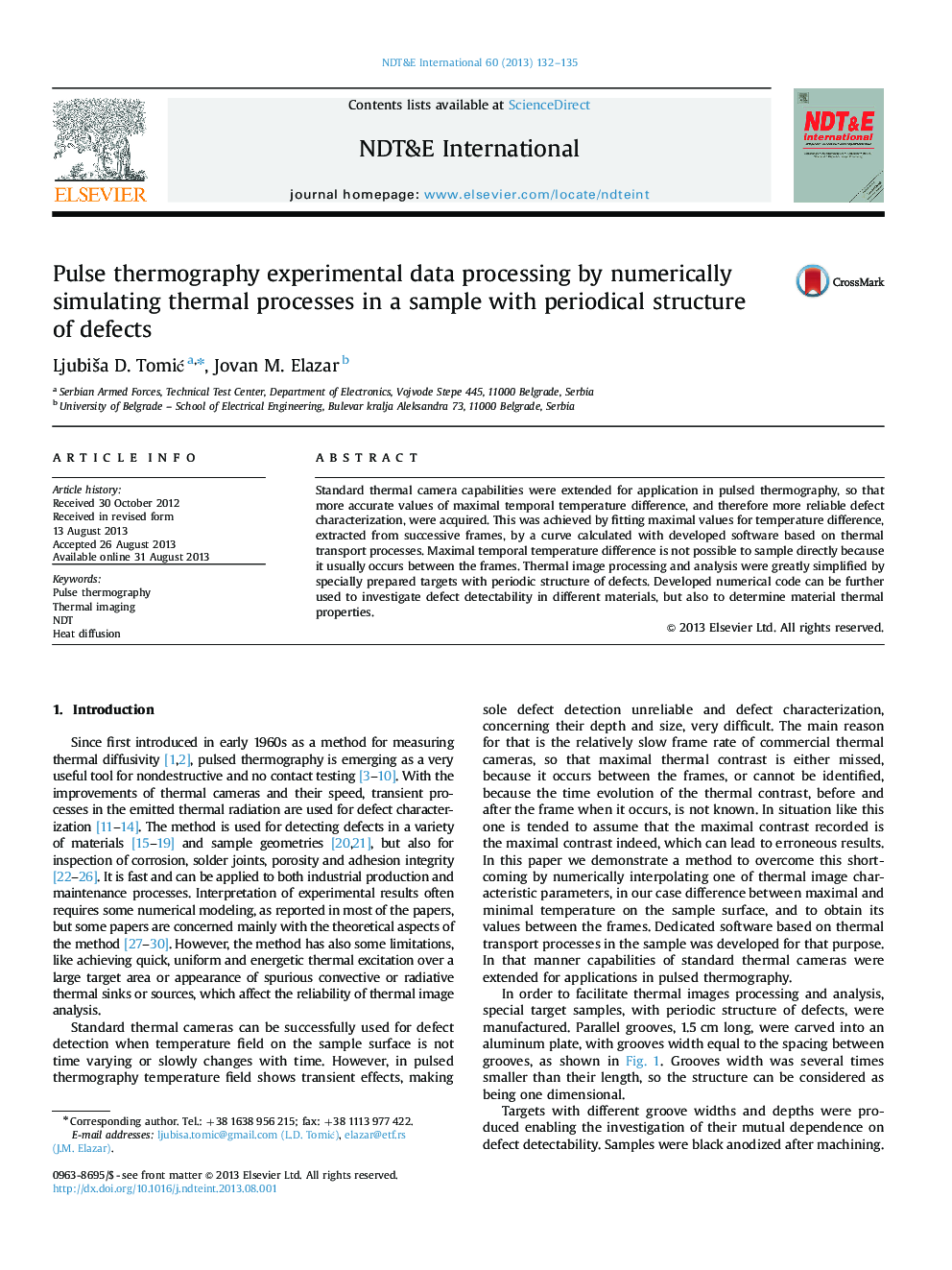| Article ID | Journal | Published Year | Pages | File Type |
|---|---|---|---|---|
| 295065 | NDT & E International | 2013 | 4 Pages |
•Simulated periodic defects in Al were investigated by pulse thermography method.•Physical and numerical models were developed to process experimental data.•More accurate values of maximal temporal temperature difference on the sample surface, and therefore more reliable defect characterization, were acquired.•Standard thermal camera capabilities were extended for application in pulsed thermography.•Developed code was used to determine maximal ΔT for different defect parameters.
Standard thermal camera capabilities were extended for application in pulsed thermography, so that more accurate values of maximal temporal temperature difference, and therefore more reliable defect characterization, were acquired. This was achieved by fitting maximal values for temperature difference, extracted from successive frames, by a curve calculated with developed software based on thermal transport processes. Maximal temporal temperature difference is not possible to sample directly because it usually occurs between the frames. Thermal image processing and analysis were greatly simplified by specially prepared targets with periodic structure of defects. Developed numerical code can be further used to investigate defect detectability in different materials, but also to determine material thermal properties.
